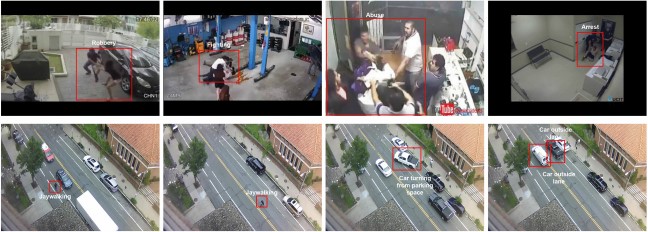A blog contribution from CERTH - Information Technologies Institute
The amalgamation of object and event detection technologies within the domain of video analysis represents a significant advancement in bolstering security applications and social media monitoring. However, the adoption of these innovations is not devoid of challenges.
In the realm of security applications, object detection grapples with a persistent challenge—reducing false positives and negatives. The imperative for heightened accuracy is paramount to ensure the identification of genuine threats while mitigating instances of spurious alarms. Addressing this concern requires continual refinement and optimization of algorithms to enhance the dependability of security infrastructure. Enhancing object detection accuracy remains a focal point for researchers and practitioners in the field [1].

Moreover, the scalability of object detection algorithms emerges as a critical consideration, given the expanding scope of surveillance networks and the escalating volume of video data. The rapid proliferation of surveillance infrastructure underscores the pressing need for scalable solutions capable of handling vast datasets without compromising accuracy.
In the context of social media, the challenges posed by object detection are distinct. The dynamic and heterogeneous nature of user-generated content necessitates the development of universally applicable models. Adapting algorithms to discern varied objects in diverse contexts and cultural nuances remains an ongoing challenge. Furthermore, the sheer magnitude of content on social media platforms requires scalable solutions for effective object detection. The exponential growth of user-generated content on social media underscores the need for scalable and precise object detection mechanisms.
Event detection, an extension of object detection, encounters challenges in distinguishing between normal and anomalous sequences of activities. In security applications, this demands sophisticated algorithms capable of discerning subtle patterns indicating potential threats. Similarly, in the realm of social media, the challenge lies in identifying events violating platform policies. There are studies [2] emphasizing the evolving landscape of online threats, which highlights the need for advanced event detection mechanisms.

These challenges underscore the imperative for collaborative efforts among researchers, developers, and stakeholders in both security and social media domains. Continuous research and innovation are pivotal to refine object and event detection algorithms, addressing intricacies specific to diverse contexts and ensuring their applicability in real-world scenarios. Overcoming these challenges will be instrumental in maximizing the potential benefits of video analysis, contributing to the enhancement of security measures and the preservation of the integrity of digital spaces.
Developments within APPRAISE
Within the framework of APPRAISE, various tools fall under the category of video analysis, encompassing real-time CCTV footage and content derived from social media platforms. These tools present distinct challenges, particularly in the context of social media, where the focus was on logo detection. The primary obstacle encountered pertained to the scarcity of pertinent data. Given the expansive and dynamic nature of social media content, our principal challenge involved developing a solution that could exhibit robust performance, scalability, and adaptability.
To address these concerns effectively, we adopted an approach centered around the creation of a synthetic dataset tailored to our specific requirements. This synthetic dataset not only fulfilled our needs but also demonstrated accurate performance across multiple scenarios, mitigating the challenges inherent in logo detection on social media platforms.
Conversely, in the realm of real-time object-based analysis of security footage, while relevant data were available, they often did not align closely with our specific requirements. Consequently, a meticulous curation process of the existing datasets ensued, complemented by additions from internet sources, and manual annotation. This refinement process resulted in heightened accuracy and improved tracking of objects of interest during dynamic actions, overcoming challenges associated with varying parameters such as lighting, size relative to the image, and blurriness.
For the event detection aspect of security footage analysis, a flexible solution was pursued to accommodate diverse expectations. This involved implementing a solution that permits the adjustment of characteristics related to the actions of interest to be detected. This adaptable approach facilitates the development of versatile solutions, allowing customization for specific problem domains with minimal intervention.
In conclusion, it is evident that the challenges inherent in video analysis problems are diverse and multifaceted. Nevertheless, addressing these obstacles requires a nuanced understanding of the distinct nature of each challenge, and developers must adopt varied approaches tailored to the specific use case at hand. The solutions outlined within the APPRAISE framework underscore the significance of adaptability, meticulous data curation, and the strategic utilization of synthetic datasets to overcome challenges in both social media logo detection and real-time object-based analysis of security footage. These methodologies serve as valuable insights for developers navigating the intricate landscape of video analysis, emphasizing the importance of bespoke strategies to ensure effective problem resolution.
[1] Zou, Zhengxia, et al. "Object detection in 20 years: A survey." Proceedings of the IEEE (2023).
[2] Vogels, Emily A. "The state of online harassment." Pew Research Center 13 (2021): 625.
